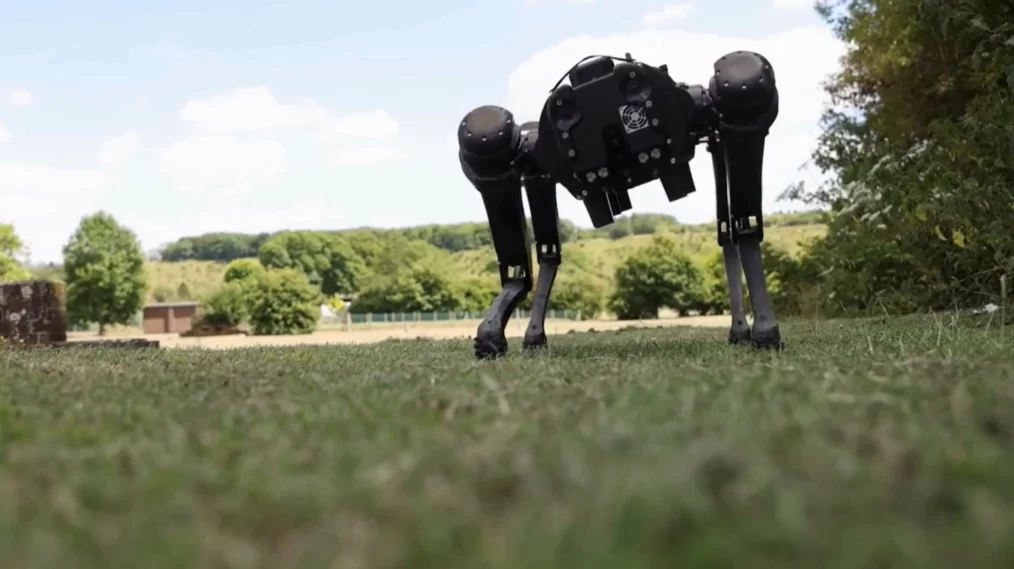
Revolutionizing Drone Operations
A four-legged robot mugs for the camera in a video on the website for Australian robotics firm Breaker. (Screengrab from website)
Australian startup Breaker is pioneering a new era of drone technology with a small, unassuming box about the size of a thick deck of cards. While it may not stand out in a room filled with large ground vehicles, this “autonomy stack” is packed with artificial intelligence (AI) algorithms designed to enhance unmanned systems for a variety of missions. Breaker’s co-founder, Matthew Buffa, explained that their technology aims to make drones behave more like human teammates, streamlining operations for the user and reducing cognitive overload.
Buffa emphasized the autonomy of their system. For instance, if a drone detects an abandoned car near a road but deems it non-threatening, it will not bother the operator, who may be preoccupied with more critical tasks. “The operator is doing something important,” Buffa said. “I’m [the drone] not going to go on the radio and tell him about this random car I’ve seen, which is what autonomous systems do right now.”
This AI-driven decision-making contrasts with current autonomous systems, which often require constant human input. Buffa highlighted the company’s goal of building robots that are intuitive to control and reduce the operator’s workload by integrating multiple autonomous systems across domains.
Breaker’s system is designed to function even under high stress. A soldier on a ridge, for example, could designate a single drone to act as the leader of a swarm, which would coordinate with the other drones and sensors. If a threat, such as a truck carrying armed personnel, is detected, the leading drone would inform the operator and seek further instructions. This type of natural two-way communication is key to Breaker’s vision.
Buffa compared the system to the Star Wars character R2D2, which helps Luke Skywalker fly, target, and shoot without overwhelming him with data. Instead of bombarding operators with information, Breaker’s AI aggregates and filters sensor input, alerting users only when necessary.
Before deployment, Breaker trains its AI models on various mission types and threats, ensuring the drones are well-prepared. Buffa explained that their team briefs the drones in much the same way human operators are briefed, providing them with mission details, documents, and visual data. This allows the AI to make smart, informed decisions during operations.
A key advantage of Breaker’s system is its ability to reduce human presence on the battlefield. Buffa pointed to lessons from Ukraine, where drone operators have been targeted by enemy forces due to the radio frequency (RF) signals emitted by their equipment. Breaker’s solution minimizes the need for continuous data streams, making the system more resilient in combat environments. By shifting more control to the AI, fewer humans are required in the field, reducing the risk of counterstrikes.
Buffa believes that offloading command structures to unmanned systems is the future of warfare, a future where operators can focus on high-priority tasks while AI handles routine decisions.



